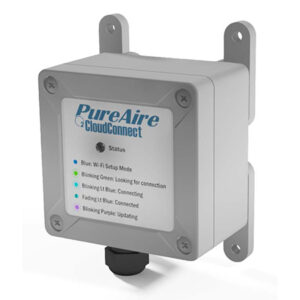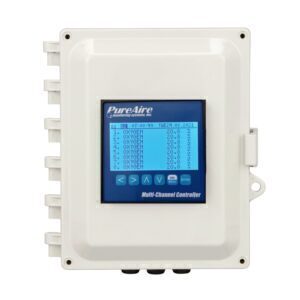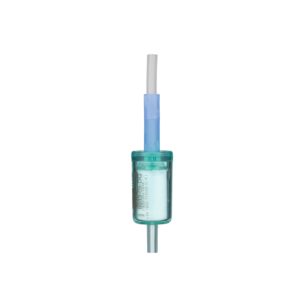- Long-Life 10+ years average sensor life
- No calibration sensor
- Two, user-adjustable, alarm relay setpoints are available or alarm defaults are set to 19.5% and 18.0%
- Built-in audible alarm 90dB (99029, 99129, 99059, 99092)
- 3-year warranty
- Digital display
- 4-20mA analog output (Active)
- No drift due to thunderstorms or barometric pressure changes
- Wall mounting brackets
- Built-in Flow Sample Pump (99019, 99029, 99059, 99060, 99129, 99130)
- UL, C, UL, and CE Approvals
- 24V DC Power supply included
Long Last Zirconium Sensor
As a leading manufacturer of oxygen detectors, PureAire Monitoring Systems prioritizes performance, reliability, and affordability. Our oxygen monitors last for 10+ years without replacement, scheduled maintenance, or hidden costs.
These Sample Draw Oxygen Depletion Monitors work well anywhere gas leaks deplete oxygen, including in laboratories, cryogenics chambers, hyperbaric chambers, and freezers. Our monitors have a long-lasting zirconium oxide sensor, which delivers reliable monitoring against argon, helium, and nitrogen leaks for 10+ years. The device has its own audible and visual alarm, but it can be connected to fire alarm systems to amplify the reach.
The Sample Draw Oxygen Depletion Monitor is easy to set up and operate, and it requires no calibration once installed. Supervised watchdog software checks that everything is working properly and notifies you of any inconsistencies on the monitor. Immune to performance changes from barometric pressure drops, humidity, and temperature, these monitors are reliable and cost-effective.
Width7.25 in184.2 mm<td>Height</strong>
| Sampling Method |
Sample Draw |
| Gases Detected |
Oxygen (O2) |
| Range |
0 – 25 % or 0 – 95% |
| Accuracy |
Delivers ±0.2% O2 accuracy (± 1 % of full range) |
| Operating Temperature |
-40º to 140ºF (-40º to 60ºC) |
| Display |
3/4″ LCD Digital Display, Back Lit |
| Sensor Type |
Long-life zirconium oxide sensor cell |
| Sensor Life |
> 10 years under Normal Conditions |
| Signal Outputs |
4-20 mA Analog Output (Active)
Dual-Level Alarm Relay Contacts
Built-in Horn |
| Power Requirements |
24 VDC
300 mA |
6.0 in
152.4 mm |
| Depth |
5.0 in
127 mm |
| Weight |
2.4 lb
1.2 kg |
| Enclosure1 |
Polycarbonate |
| Calibration |
Calibration is not required.
Periodic span adjustment as needed. |
Optional
|
Available without Horn. Contact PureAire for details. |
| Country of Origin |
USA |
| Harmonized Tariff Code |
8531.10.0045 |
1 Not intended for explosive atmospheres
Connects to Distributive Control Systems and Programmable Logic Controllers
The AirCheck O2 Sample Draw Monitor can be used with PureAire’s proprietary controllers, either single or multichannel. Dual selectable alarm relays set off strobe lights and remote horns, so that staff can learn of the hazard. Individuals can operate the oxygen monitors remotely by as much as 1,000 meters or 0.6 miles from the centralized control systems.
Better Oxygen Sensor Cell
Unlike other oxygen monitors, PureAire’s AirCheck O2 Deficiency Monitor is built with a zirconium oxide sensor cell. This sensor does not need a reference gas and can perform reliably in environments that contain 100 percent nitrogen. The sensitive monitor reads oxygen levels in percentages, so it can operate in lower-temperature environments than the more frequently used concentration-type cells. The improved cell enables PureAire sensors to last 10+ years.
While other oxygen deficiency monitors may require semi-annual (or even more frequent) tune-ups to work properly, PureAire’s line of Oxygen Deficiency Monitors provides constant monitoring, with no calibration required. Only a simple, periodic span adjustment may be necessary. For peace of mind, test the unit’s response by subjecting the system to nitrogen periodically. This saves our customers time and money, protects their facilities and employees, and provides them the comfort that comes from consistently reliable performance.
O2 Monitor System Features
PureAire offers its AirCheck O2 Deficiency Monitor in multiple configurations. Every unit comes with a choice of a low-cost basic display monitor or a full-featured, dual-level monitor with user-selectable alarm relays. When built-in alarm relays are used, the sensor continuously monitors electronics, sensor cells, and sample flows. Any faulty information is provided to the front panel LED, mA output, and alarm relay, for instant notification.


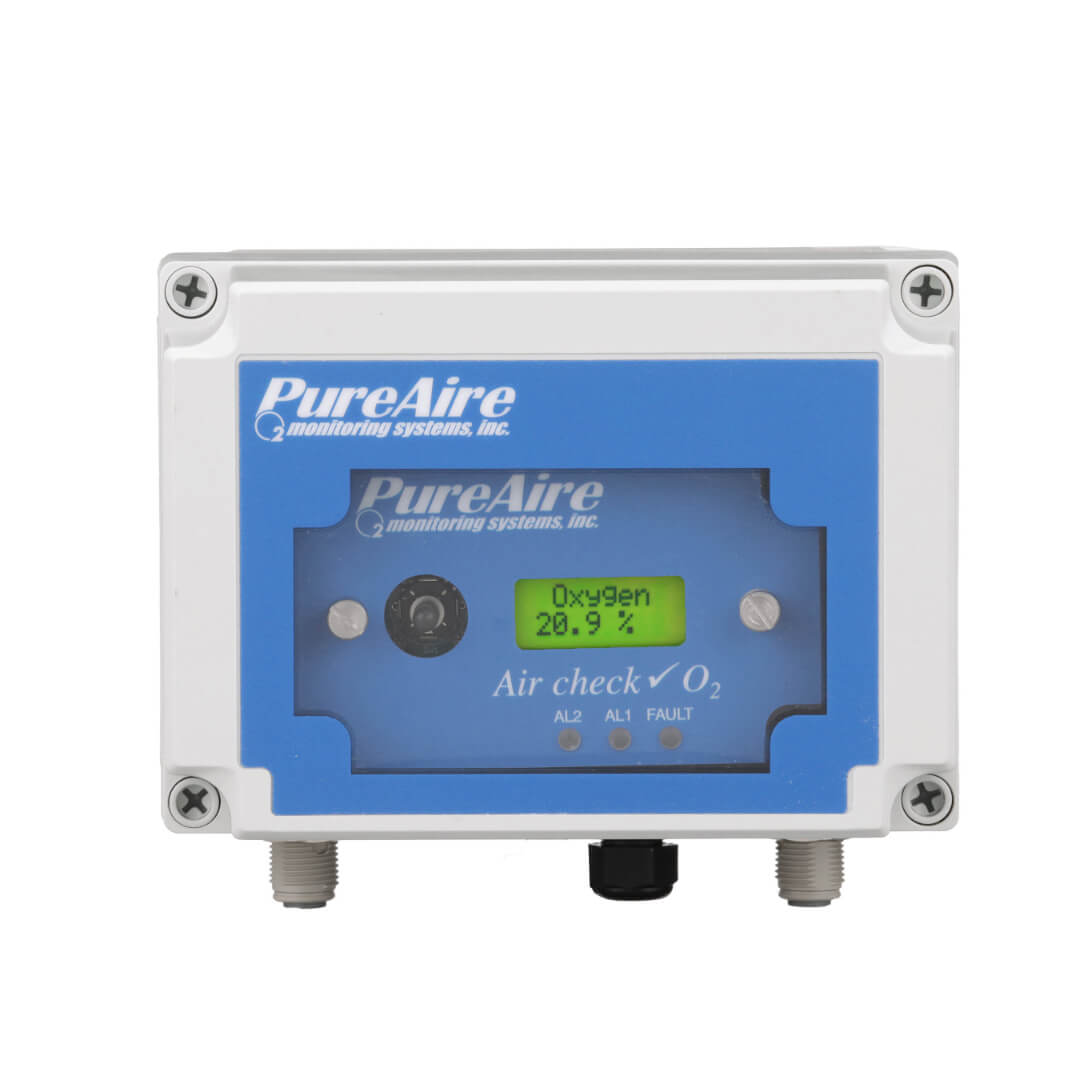
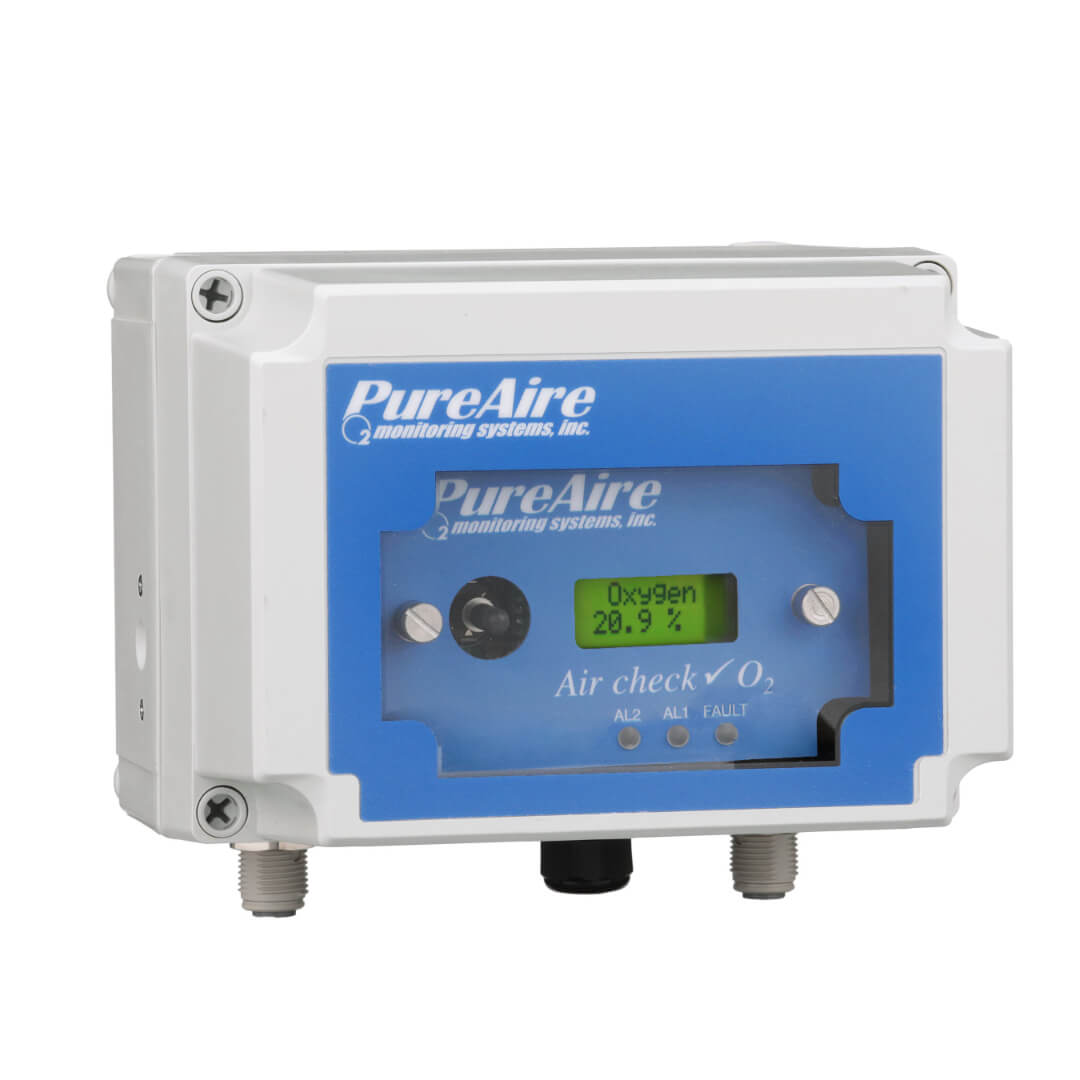






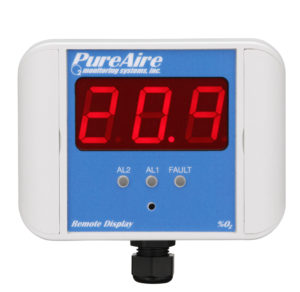
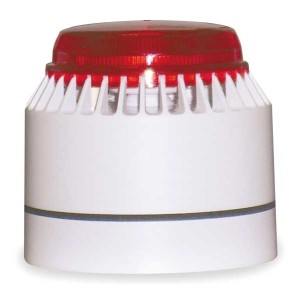 ght=”300″ />
ght=”300″ />